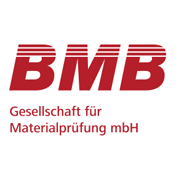

We are looking forward to help you!
Contact us »Always on the safe side with our various test methods. From non-destructive testing to destructive testing, we are sure to have the right solution for you.
With more than 30 years of experience in non-destructive testing, we guarantee you a fast and smooth inspection process. Quality comes first here. Whether PT testing, RT testing or CT testing, you will benefit from our experience in the most varied areas of non-destructive and destructive material testing.
fields of application
Defects, mostly finest cracks, detections which are open to the surface.
Process
A liquid is applied to the components, which is deposited in the individual finest cracks and either by the excitation with UV light or by the contrast of the applied developer fine cracks become visible.
Advantages
The finest cracks can be detected.
fields of application
Represent entire components three-dimensionally to evaluate the component properties. In addition, make individual sections through the respective component in order to evaluate specific component locations.
Process
The component is represented in three-dimensional form by 360 X-ray sections, which are assembled to form an image.
Advantages
With this procedure, a CAD data target/actual comparison and a saw cut determination is possible without destroying the respective component.
fields of application
Defects, mostly internal blowholes or inclusions, can be detected on the live image.
Method
The component is clamped in a fully protected X-ray system and inspected live on the screen by trained X-ray inspectors. Detected defects in the component are provided with a reference ball in order to determine its size.
Advantages
Blowholes and inclusions in a component, up to the dimensions of an engine block, can be tested.
fields of application
Detect internal faults in the component, as these have a changed electrical conductivity.
Process
A coil with alternating voltage is applied to the component. Eddy currents are generated which run perpendicular to the magnetic field lines entering the workpiece. Defects cause detours and weaken the eddy currents.
Advantages
Displays that were found with the help of the penetration test can be determined in depth. This results in a better evaluation of the individual ads.
fields of application
Detect surface defects in ferromagnetic materials, mainly steel, with highest sensitivity.
Process
A magnetic field is introduced into the test object by means of various magnetization techniques. When material changes occur, the magnetic field emerges from the surface as magnetic flux leakage and becomes visible through magnetizable particles.
Advantages
Even complicated material geometries and unmachined surfaces can be tested.
fields of application
Detect deviations of the surface, such as scratches and scores.
Procedure
Inspection of the components for surface deviations with the aid of magnifying glasses, microscopes or endoscopes.
Advantages
The most serious process errors are brought to light in order to draw the customer's attention to errors in the process.
fields of application
The hardness of a material is defined as its resistance to the penetration of a (harder) body.
Process
The test according to Brinell (DIN EN ISO 6506-1, is carried out with a ball diameter of 1mm, 2.5mm and 5mm), Vickers (DIN EN ISO 6507-1) and Rockwell (DIN EN ISO 6508-1).
Advantages
Low acquisition costs as well as a fast and uncomplicated execution allow fast results.
fields of application
Inhomogeneities and defects in the entire cross-sectional area of workpieces made of all types of sound-conducting material can be detected.
Process
Transit time measurement of sound waves emitted by an ultrasonic source and whose reflections are absorbed by the sound sensors. Errors cause a different reflection behavior of the sound waves.
Advantages
Detect surface defects up to 1 μm, for smooth, non-porous surfaces.